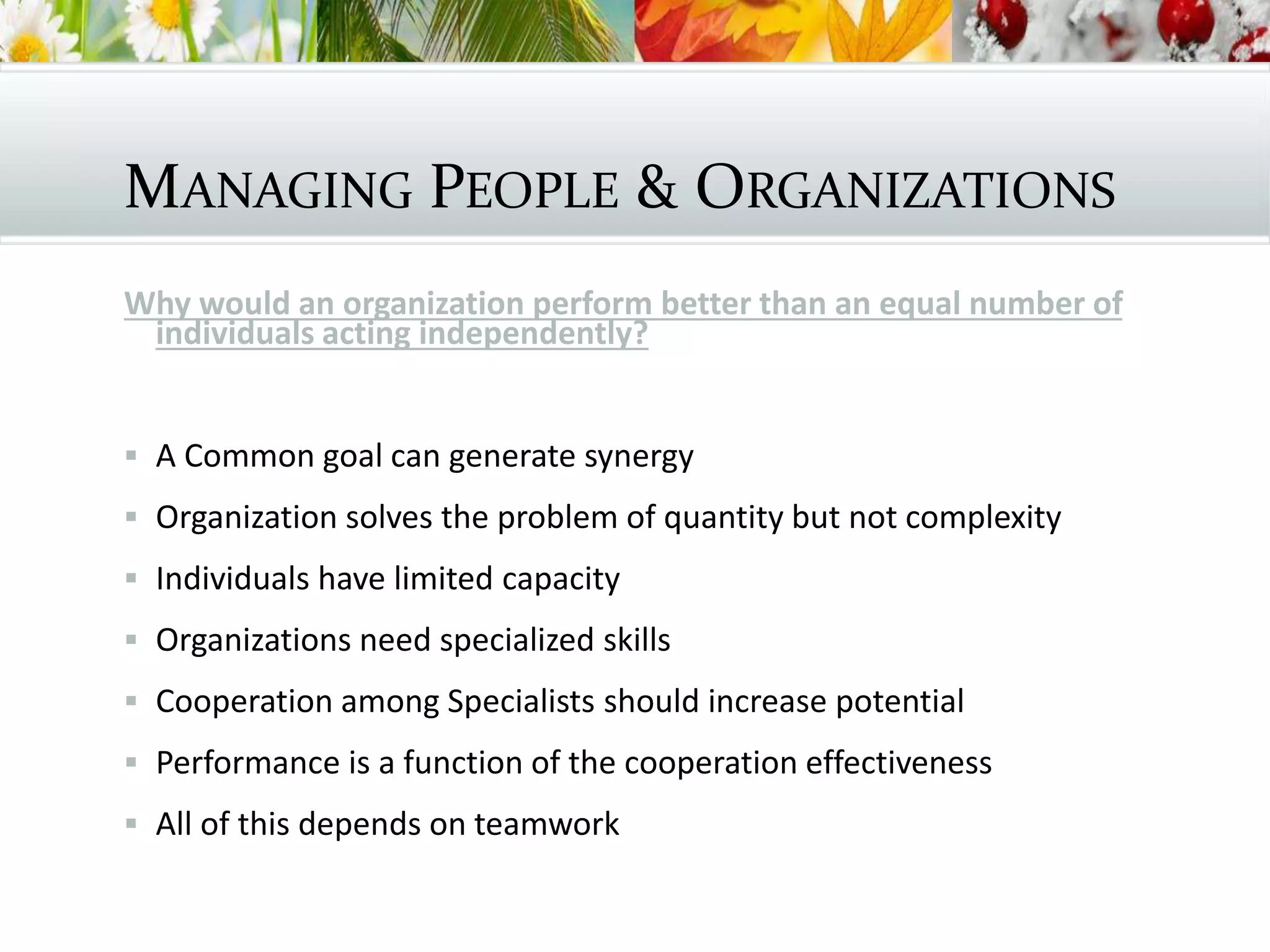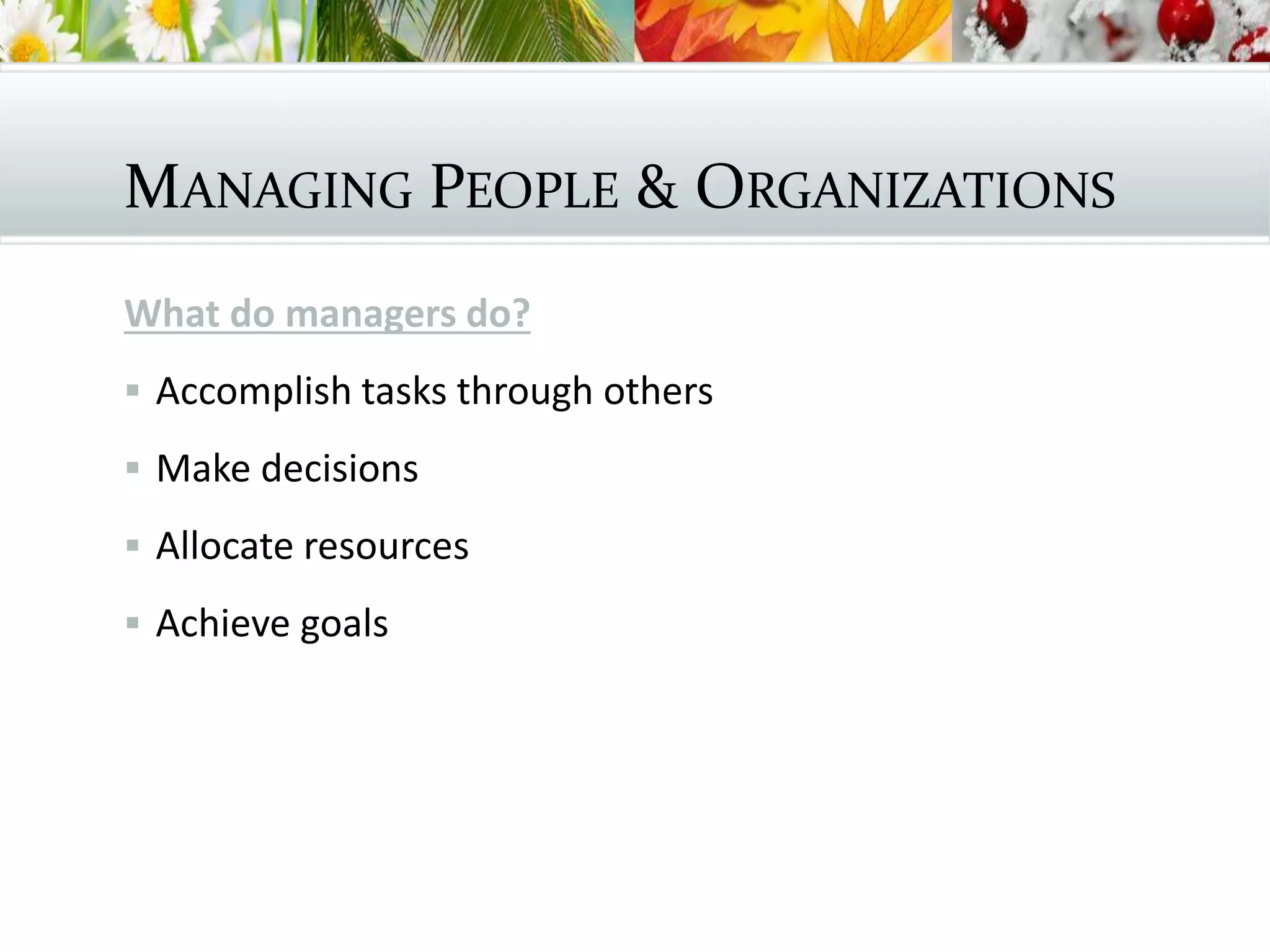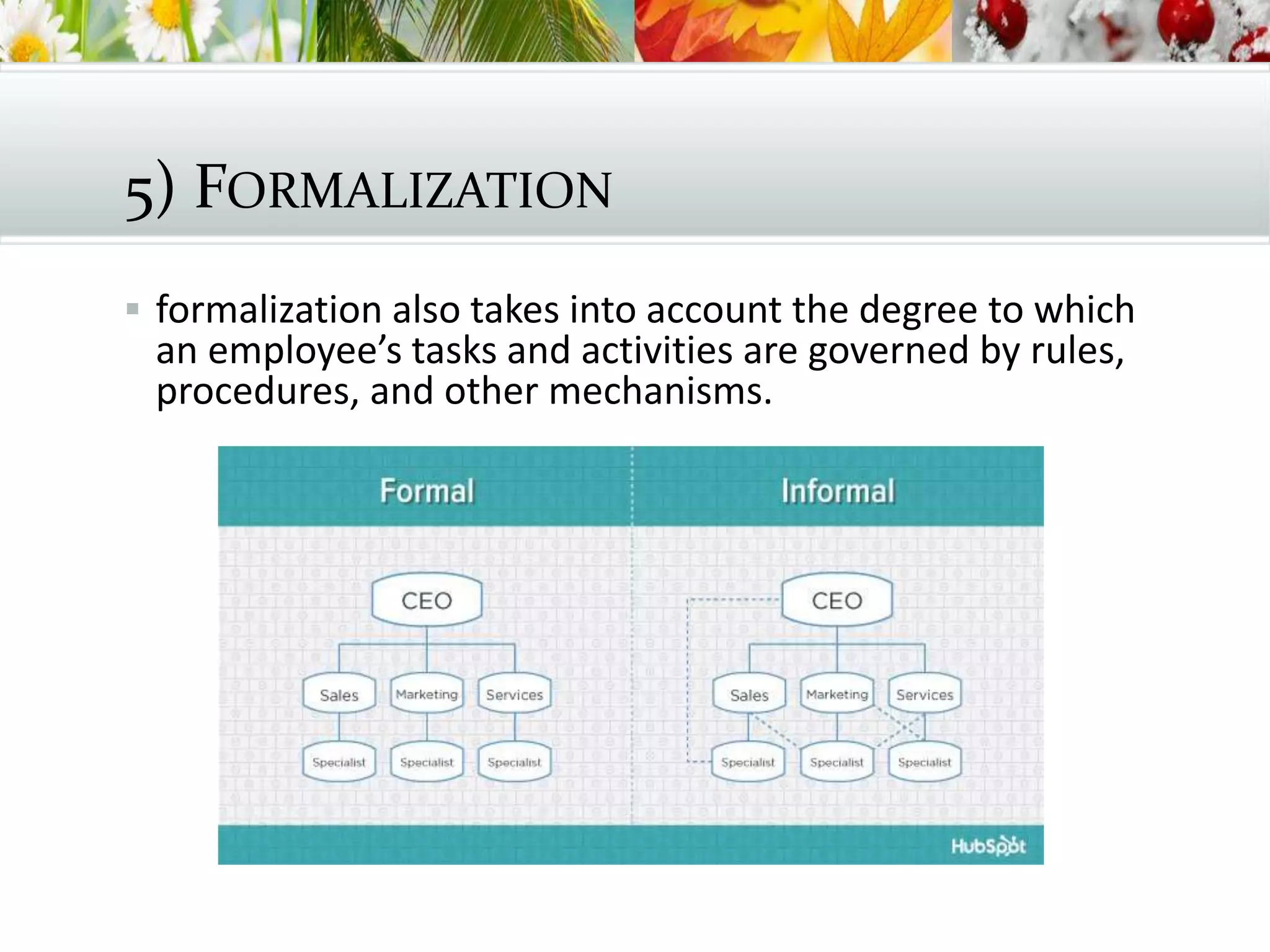This document provides an overview of key concepts related to understanding organizations. It defines an organization as a group of people united by a common purpose. Organizations have features like two or more persons, common goals, division of work, and communication flowing downward. The process of organizing involves prescribing formal relationships among people and resources to achieve goals. An organization can be compared to a living organism in order to understand its history, context, relationships, problem-solving abilities, image, and habits. Managers plan, lead, organize, and control organizations by accomplishing tasks through others, making decisions, allocating resources, and achieving goals. Organizational structure consists of elements like the chain of command, span of control, centralization, special


























